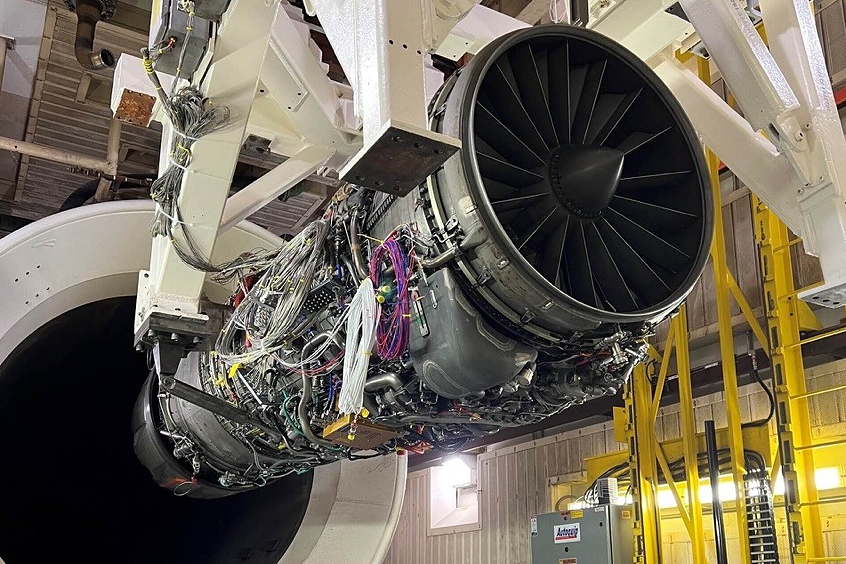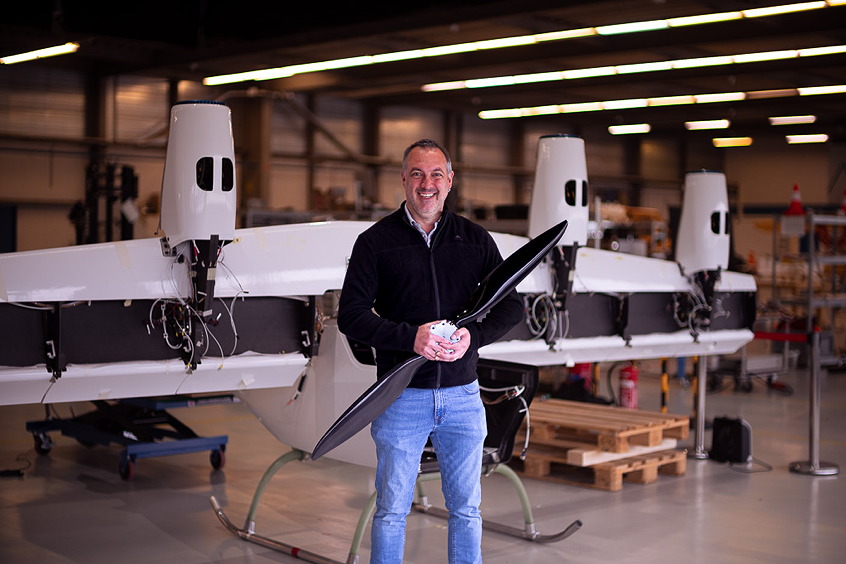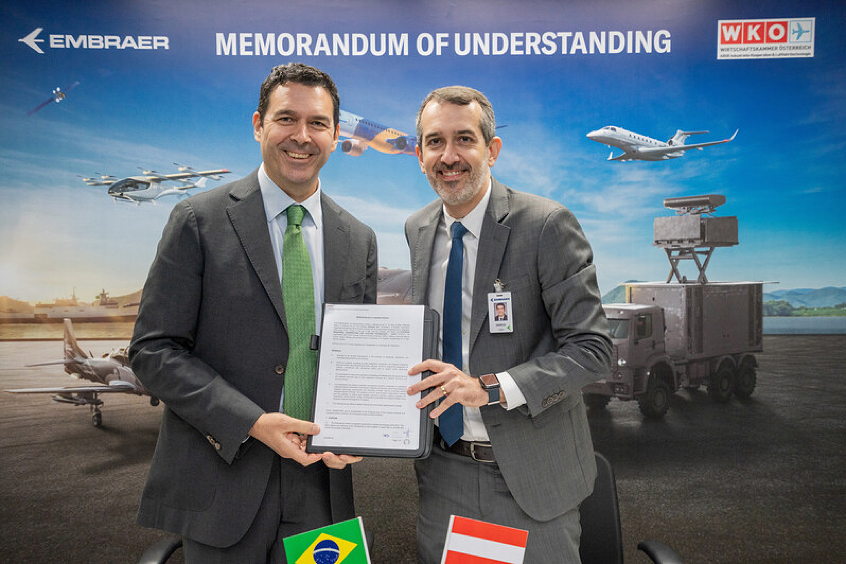GE Aviation and NASA are teaming on a wind-tunnel test program to evaluate counterrotating fan-blade systems for "open rotor" jet engine designs that could sharply reduce fuel consumption.
The testing will begin in wind tunnel facilities at NASA's Glenn Research Center in early 2009 and continue into mid-year. This is not a full engine test, but a component rig test to evaluate subscale fan systems using GE's and NASA's advanced computational tools and data acquisition systems.
Rising fuel prices have led GE and NASA to re-visit open-rotor engine systems. In the 1980s, GE successfully ground-tested and flew an open-rotor jet engine that demonstrated fuel savings of more than 30 percent compared to similar-sized, jet engines with conventional, ducted front fan systems. Since then, GE has dramatically advanced its data acquisition systems and computational tools to better understand and improve open-rotor systems.
"GE and NASA journeyed down this path 25 years ago with great technical success," said David Joyce, president of GE Aviation. "Today's fuel crisis greatly influences future jet engine concepts. GE and NASA will evaluate open-rotor concepts in the wind tunnel with far greater technology capability."
For the NASA tests, GE will run two rows of counterrotating fan blades at 1/5 subscale in several configurations, tested in simulated flight conditions created in Glenn Research Center's 9-by-15-foot low speed and 8-by-6-foot high speed wind tunnels.
GE and the Fundamental Aeronautics Program of NASA's Aeronautics Research Mission Directorate in Washington are jointly funding the program. Snecma (SAFRAN Group) of France, GE's longtime 50/50 partner in CFM International, a highly successful joint company, will participate with fan blade designs.
Open-rotor jet engine designs are among the longer-term technologies being evaluated for LEAP-X, CFM International's (GE/Snecma) technology program focusing on future advances for next-generation CFM56 engines.
NASA's testing rig equipment, which is being refurbished for the activities, was actually used in the 1980s when NASA and GE jointly tested scale-model, counterrotating fan systems that led to the development of the GE36 jet engine. The NASA test hardware is also capable of simulating aircraft installation systems with the open-rotor fan systems.
The GE36, which flew on Boeing 727 and MD-80 aircraft, featured an aft-mounted, open-rotor fan system with two rows of counterrotating composite fan blades. The enormous efficiency from bypass air created by this fan system drove the GE36's dramatic fuel savings. Snecma was a 35 percent participant on the GE36 program. As fuel prices fell sharply in the late 1980s and early 1990s, the GE36 was never launched commercially, though it was recognized worldwide as a technology breakthrough.
The upcoming rig tests will focus mostly on the acoustic characteristics of various fan configurations, as well as performance and efficiency characteristics. Engine noise is a prime challenge in operating open-rotor engine systems in a commercial aviation environment.
GE is designing and fabricating the scale-model blades at its Cincinnati facility using technical input provided by the GE Corporate Research Center in New York.
NASA's Aeronautics Research Mission Directorate, in partnership with U.S. industry, universities, and other government institutions, develops critical systems technologies and capabilities that address national priorities.
| Contact details from our directory: | |
| NASA Glenn Research Center | Research/Consulting Services, Wind Tunnels |
| GE Aerospace Engines | Turboprop Engines, Turboshaft Engines, Turbofan Engines, Turbojet Engines |
| Related directory sectors: |
| Test Equipment |
| Engines |
Weekly news by email:
See the latest Bulletin, and sign up free‑of‑charge for future editions.

Amprius and Stafl team up for battery pack innovation

RISE engine efficiency project gains momentum

Dufour picks Mejzlik propeller blades for the Aero2
